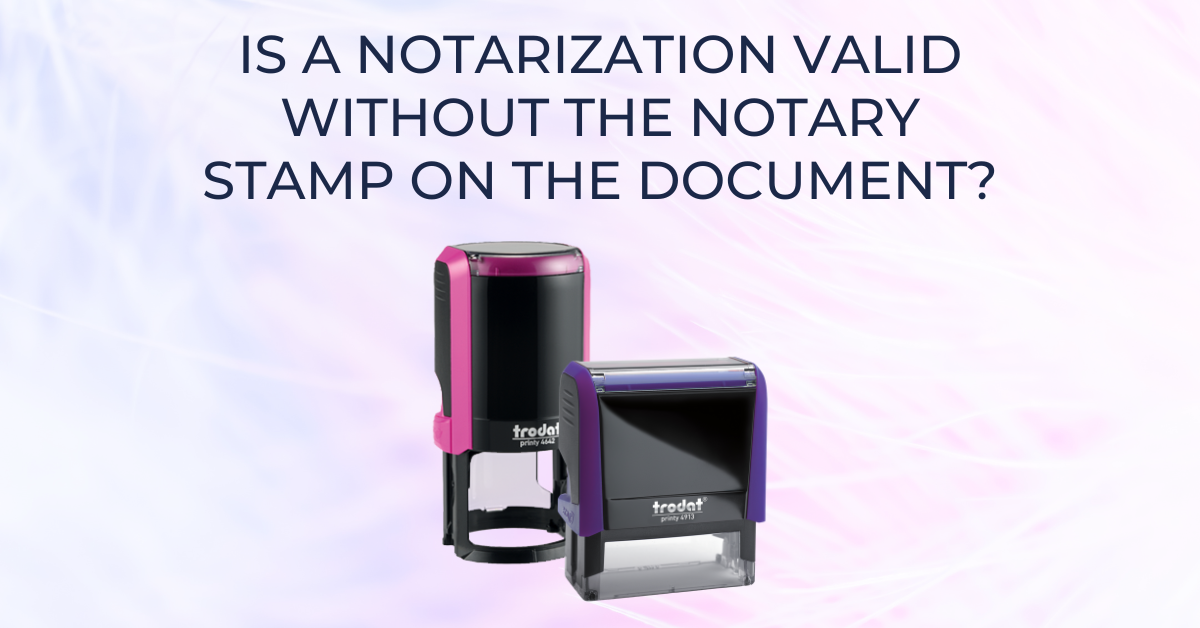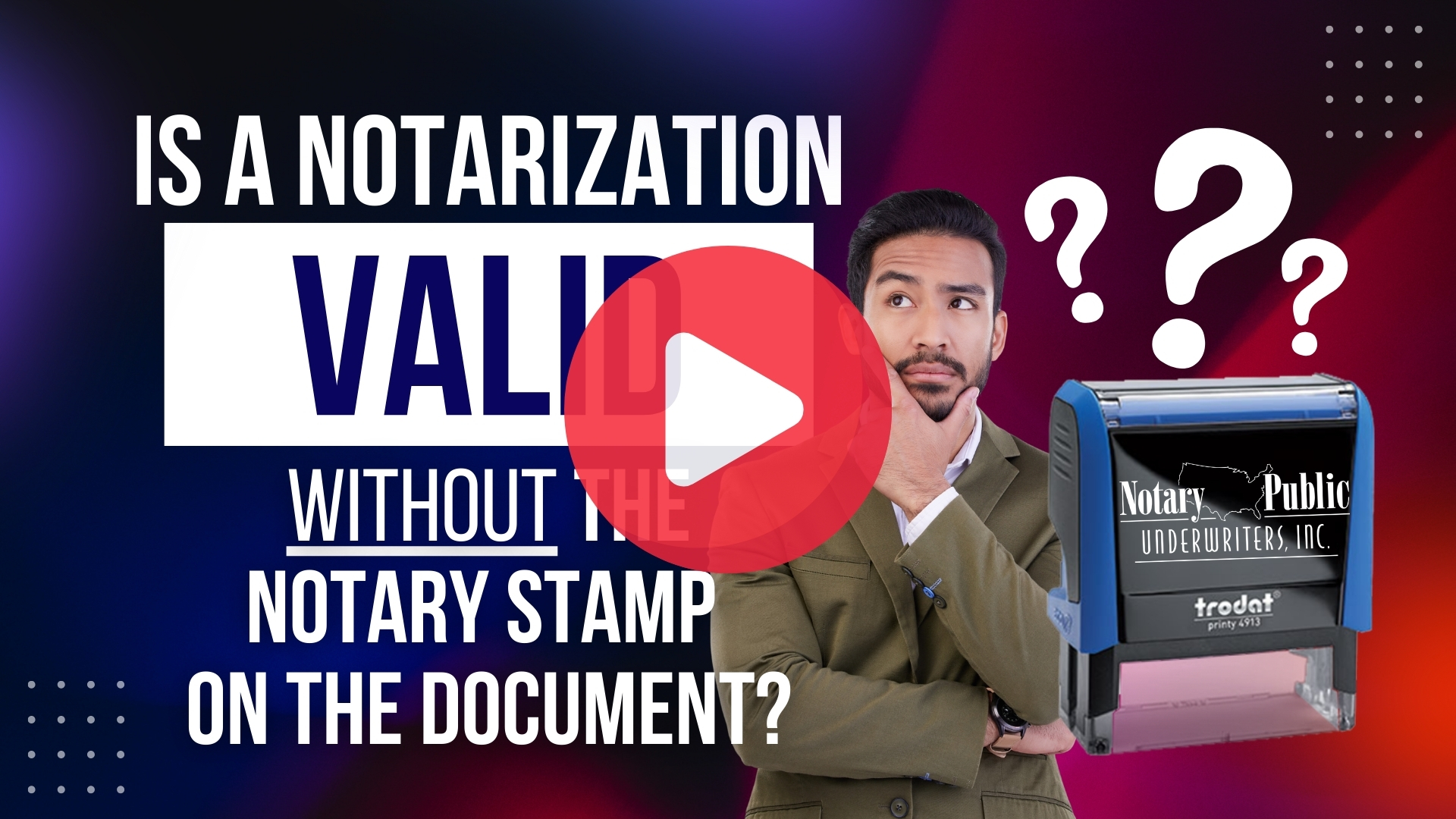Notary Public Underwriters Blog
Is a Notarization Valid Without the Notary Stamp on the Document?
- Details
- Published: September 16, 2024

Without question, the most familiar symbol of a notary public’s authority is the stamped or embossed imprint of the notary’s seal on a document, near the document signer’s signature.
Every signature notarization requires a notary public to complete a signed statement, called the notarial certificate. This statement includes the facts of the notarial act performed, such as the date and location of notarization, the name of the person whose signature was notarized, that the individual personally appeared before the notary, and the type of notarial act performed.
In addition, the notary public’s printed name, title, state of commission (or appointment), commission expiration date, commission number (if any), and signature appear at the end of the notary’s statement. In many states, this information (except for the notary’s signature) must be added to the notarial certificate by means of an official stamp. The information about the notary contained in the official stamp is ink-stamped—or embossed if the notary’s state allows or requires it—in the area next to or near the notary’s signature.
Some states, however, allow the notary’s information to be handwritten within the notarial certificate. When notaries are allowed to handwrite this information and then choose to do so, they might be questioned about the “missing” notary stamp.
This is just one reason most notaries choose to use a stamp or embosser every time they notarize, even if they aren’t required to do so. These notary tools are also very convenient, enabling all the required information to be crisply impressed within the notarial certificate area. Notary stamp images are generally more compact than embosser images, allowing the notary’s information to be stamped in spaces that wouldn’t accommodate handwriting. For all these reasons, notary stamps are so widely used that the average person expects to see a notary stamp impression in every notarial certificate.
So, the lack of a stamped notary seal in a signed notarial certificate doesn’t automatically invalidate a notarization. It all depends on the notary’s state requirements and permissions.
But why risk questions about your completed notarial certificates? Many notaries whose state requires use of an embossing seal for notarizations will also affix a notary stamp in the notarial certificate, to be sure that their required commission information is clear and legible. (Always check your individual state requirements for applicable permissions and restrictions affecting the use of both tools.) Ink stamps are easy to use, make a crisp and clean impression, and satisfy the public’s expectation to see a notary stamp image on a document containing a notarized signature.
Explore your notary ink-stamp options by visiting our Notary Supplies page. We’ll make your new notary ink stamp expertly, in compliance with your state’s requirements, and we’ll proudly back it with our lifetime guarantee.
Watch our YouTube video:
Related Article(s)
Can I Notarize When the Person Has No ID?
What to Do When the Notary Certificate Is Missing?
What Should I Do When There's No Room for My Notary Stamp?
Can I Notarize a Document That Is Already Signed?
Can a Notary Change a Document’s Date?
How to Notarize Signatures on Handwritten Documents
What to Do When Names Don’t Match on the ID and Document
Can I Notarize a Document in a Language I Don’t Know?

